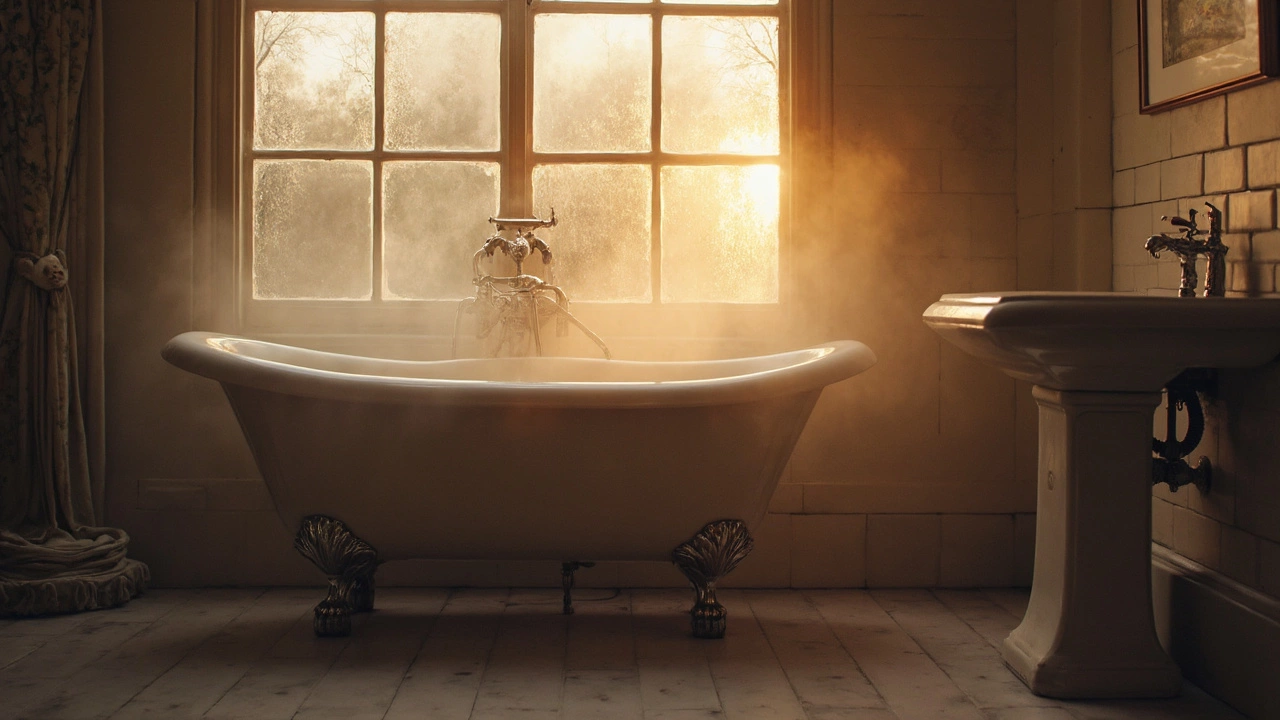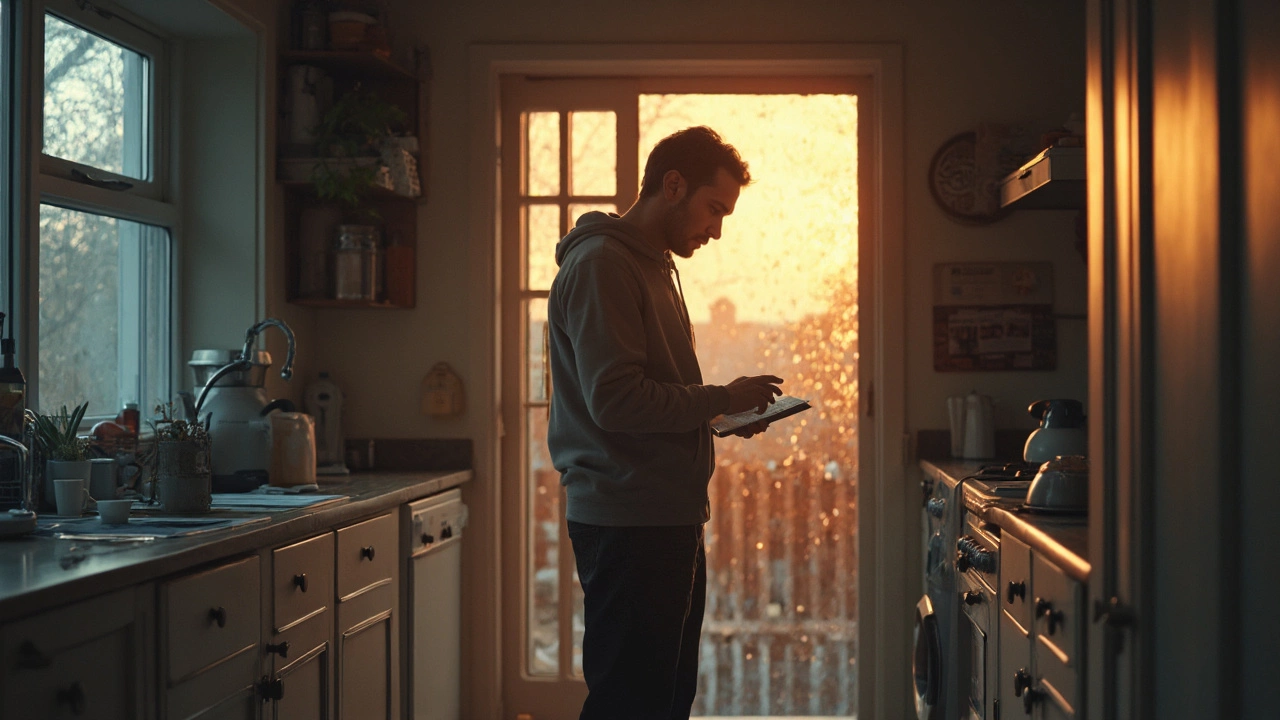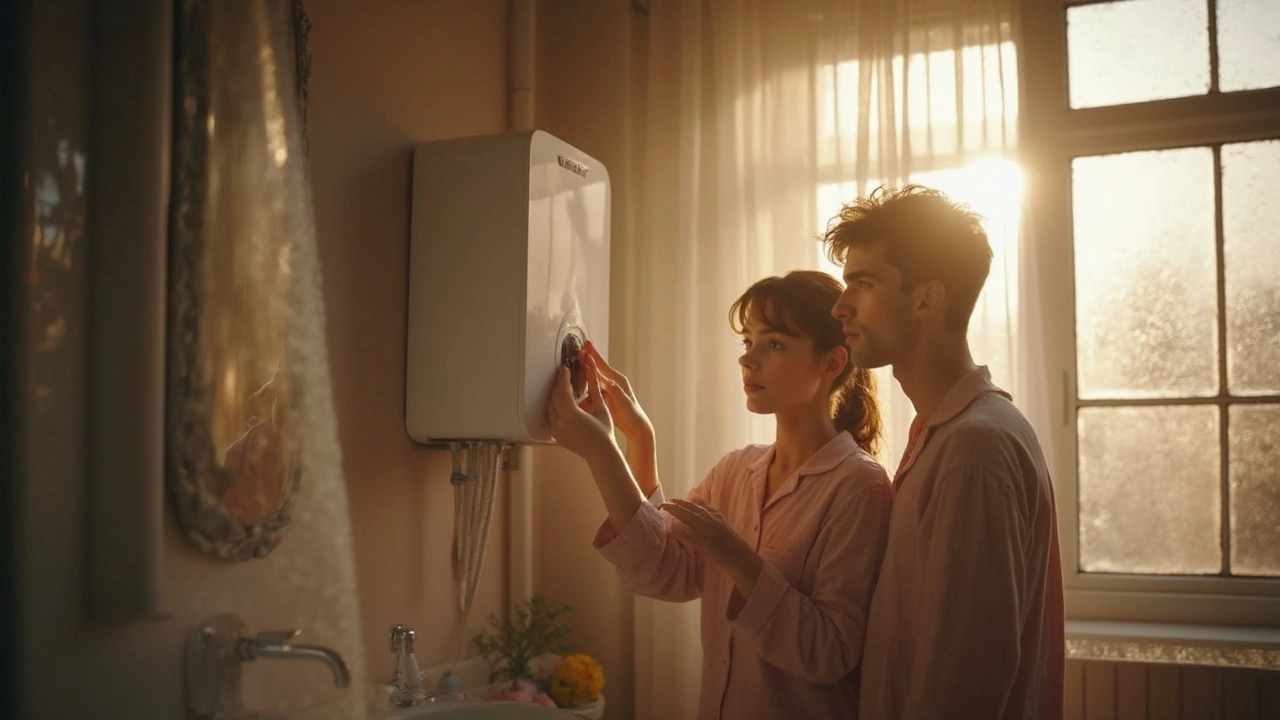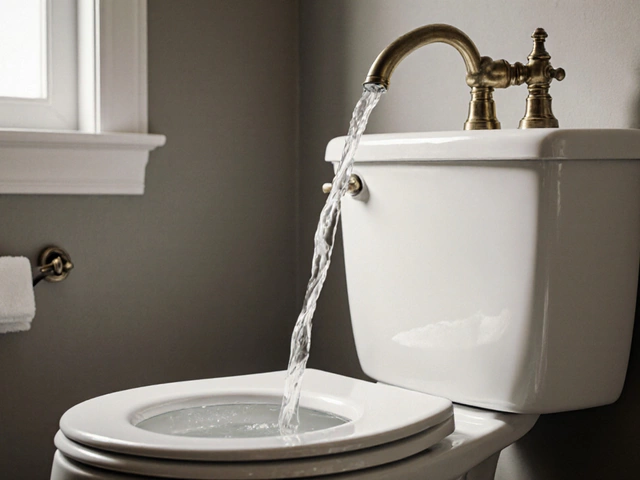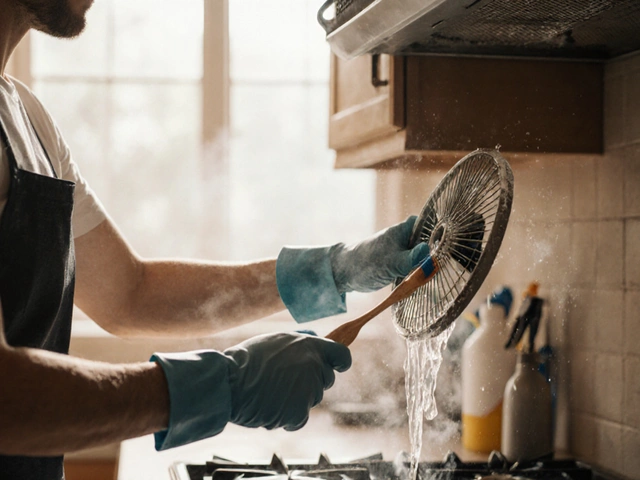You know that frustrating moment when you're looking forward to a hot shower, but get blasted with cold water instead? Yet, the sink just a few feet away runs hot like a charm. You're not imagining things, and you're definitely not alone. This issue can be a headache, but with a bit of detective work, you might get to the bottom of it.
First off, the culprit might be lurking somewhere in your plumbing. Houses often have complicated pipe networks, and sometimes these can lead to uneven water temperatures in different fixtures. Your sink and shower might not be pulling from the same water lines, causing one to hog all the hot water while the other leaves you shivering.
It could also be your water heater acting up. If it’s not doing its job properly or is too small for your household's needs, you’ll end up with inconsistent hot water. It's worth checking if the water heater is turned to a cooler setting or if it's sharing its load with other high-demand appliances at the same time.
- Common Plumbing Issues
- Water Heater Malfunctions
- Blocked Pipes
- Balancing Water Pressure
- DIY Tips for Troubleshooting
Common Plumbing Issues
Sometimes, the answer to your hot water dilemma lies in the plumbing itself. One of the more common issues is the setup of pipes not being ideal. The layout might have your shower and sink pulling from different lines, where one line gets priority over hot water flow. It’s like your sink is first in line at an all-you-can-eat buffet, leaving the shower with scraps.
This prioritization can come from the size of the pipes, or how they are connected to the water heater. If the cold water pressure is higher than expected, it might overpower the hot water line, especially when both the shower and sink are demanding hot water.
Temperature Balancing Valves
Now this might get a little technical, but some showers have mixing valves that help adjust water temperature. These valves mix hot and cold water to deliver a consistent temperature. If the valve is broken or clogged, the mixing process might not happen correctly. You might get more cold water than hot, leading to that shocking shower moment when you least expect it.
Pipe Blockages or Mineral Build-up
Old plumbing systems can have blockages due to corrosion or mineral build-up in the pipes, especially in areas with hard water. The blockage often throttles the flow of hot water to certain fixtures. A heavily scaled pipe reduces both flow and heating efficiency, and it might mean the water takes a detour, losing temperature along the way.
Signs of Plumbing Issues
- Reduced water pressure.
- Inconsistent water temperatures.
- Strange noises in the pipes.
- Visible rust or mineral build-up around outlets.
Understanding these potential plumbing issues can point you in the right direction. It's always a good idea to consult with a professional plumber if these quick checks don't solve the issue.
Water Heater Malfunctions
Let's talk about water heaters—they're those unsung heroes in our homes, tirelessly working to pump out that much-needed hot water, whether it's for your morning shower or washing dishes at the sink. But when they slip up, it can throw a wrench in your day. So, why might your water heater be failing to deliver hot water to your shower while your sink functions perfectly?
Check the Temperature Setting
A simple tweak might be all it takes. Sometimes, the temperature setting on your water heater may have been adjusted accidentally. Make sure it's set between 120 to 140°F, which is typically the sweet spot for comfort and efficiency.
Repair or Replace a Faulty Thermostat
A malfunctioning thermostat can mess with your hot water supply. If your water heater has more than one thermostat—common in models with multiple heating elements—ensure both are functioning correctly. A bad thermostat could mean one part of the water tank is staying cool.
Heating Element Issues
The heating element is like the powerhouse of your water heater. If it's damaged or worn out, it might not heat water properly. You'll often notice one of two elements isn't working right if your water suddenly turns cold mid-shower.
Regular Maintenance
Neglecting routine maintenance can result in various water heater issues. Flushing the tank every six months helps remove sediment buildup, which can cause clogs and uneven heating. Regular inspections can also point out problems before they leave you without hot water.
Here's a simple checklist you can follow:
- Check the thermostat settings.
- Inspect and test heating elements.
- Flush the tank to remove sediment.
- Schedule professional maintenance once a year.
If these DIY adjustments don't help, it could be time to call in a plumbing professional who specializes in water heater repair. Remember, they have the expertise to diagnose and fix more complex issues, ensuring you aren't stuck with cold showers for long.
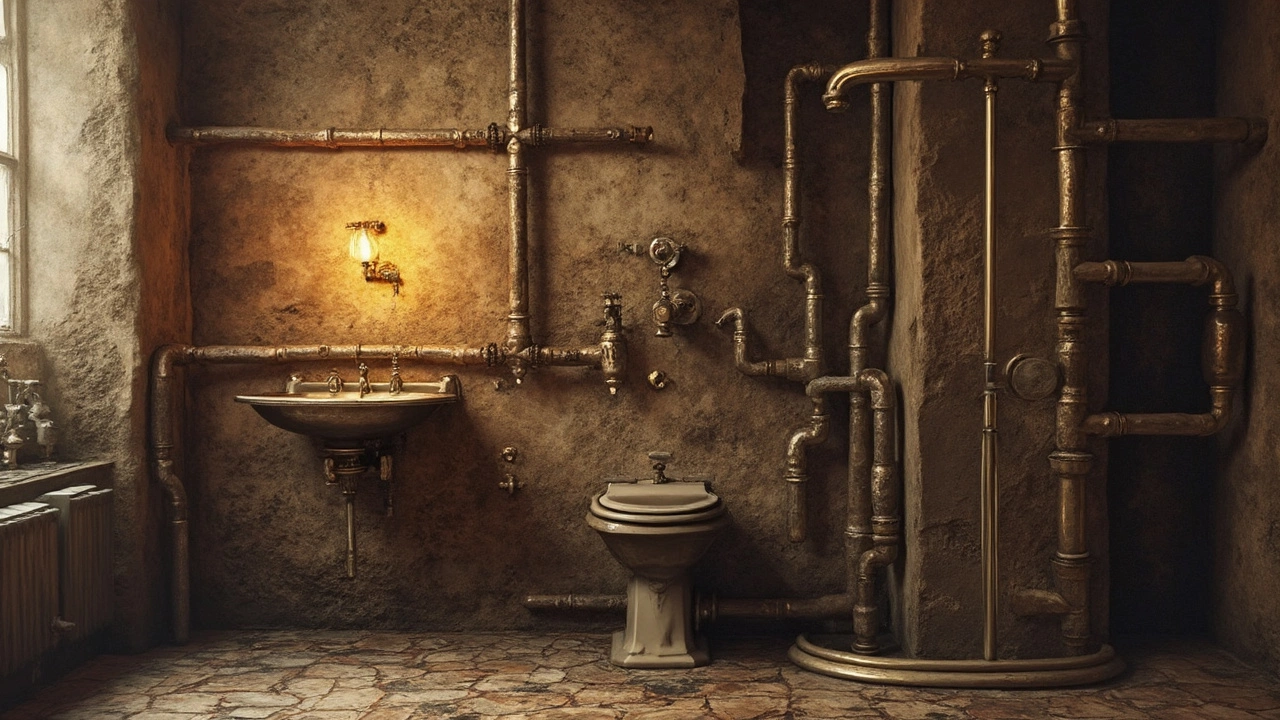
Blocked Pipes
Clogged pipes are like the sneaky gremlins of your plumbing system. They're often invisible, creeping behind the walls, and they can secretly mess with your hot water supply. But how do these pesky blockages happen in the first place?
A common cause is the buildup of mineral deposits from hard water. Over time, these deposits can narrow pipes, reducing the flow of hot water to certain fixtures like your shower. Sediment can settle in your pipes, creating bottlenecks. This means even if your water heater is working like a champ, the hot water might not be making it to the shower.
Signs of a Blocked Pipe
- Weak water pressure, particularly noticeable in the shower.
- Inconsistent water temperature - hot one moment, cold the next.
- Bubbling or gurgling noises coming from the pipes.
Now, how do you go about clearing these blockages? Well, some folks might reach for a store-bought drain cleaner. But be cautious! These chemicals can sometimes do more harm than good, especially if they corrode your pipes further.
DIY Solutions for Clearing Blocked Pipes
- Boiling Water: Pouring boiling water down the drain can help dissolve minor blockages resulting from grease or soap. Do it slowly, and let it work its magic.
- Vinegar and Baking Soda: This age-old combo can unclog pipes. Pour a cup of baking soda followed by a cup of vinegar into the drain. Let it fizz, then rinse with hot water.
- Drain Snake: Invest in a drain snake (or borrow one). It can physically remove blockages deep in the pipes.
If all else fails, it's time to call in a professional plumber to save the day. They have the tools and expertise to spot and fix stubborn clogs without causing damage.
Or maybe blockages aren't your only issue. Sometimes it’s all about pressure balance. A blocked pipe might change how water flows through your system, making troubleshooting a bit like detective work. Solving the mystery of your cold shower could very well come down to finding that elusive blockage.
Balancing Water Pressure
If you've dealt with lukewarm showers while the sink water is scalding, your home's water pressure might be the sneaky offender. Imbalances in pressure can mess with how hot water distributes around your home. It’s worth checking out if this is what’s unsettling your shower experience.
Why Water Pressure Matters
Water pressure is crucial for ensuring both hot and cold water flow evenly. Different fixtures might draw water from pipes with varying pressure levels. If your shower's pressure is significantly lower, it could fail to access hot water when required, leaving you with cold bursts. Meanwhile, your sink might be sipping from a high-pressure pipe, giving off that lovely warm water you crave.
Simple Checks and Fixes
Start by checking your showerhead. Mineral buildup can block off holes, decreasing the water pressure. Worry not; a quick cleaning or replacement can do wonders.
- Remove the showerhead and soak it in a mixture of vinegar and water for a couple of hours.
- Scrub with a brush to loosen any remaining deposits.
- Rinse and put it back. Test the flow to see if there’s any improvement.
Another possibility is whether your pressure balancing valve is working properly. This plumbing piece equalizes water pressure in mixed systems, ensuring a steady temperature by adjusting water flow on the fly. If it's faulty, it might need a pro to step in for a repair or replacement.
Recommended Pressure Levels
If you're a numbers person, you might find this table helpful:
| Fixture | Ideal Pressure (PSI) |
|---|---|
| Showerhead | 45-60 PSI |
| Faucet | 40-55 PSI |
A consistent water pressure in these ranges ensures everyone in your house can shower and wash up without a temperature war breaking out.
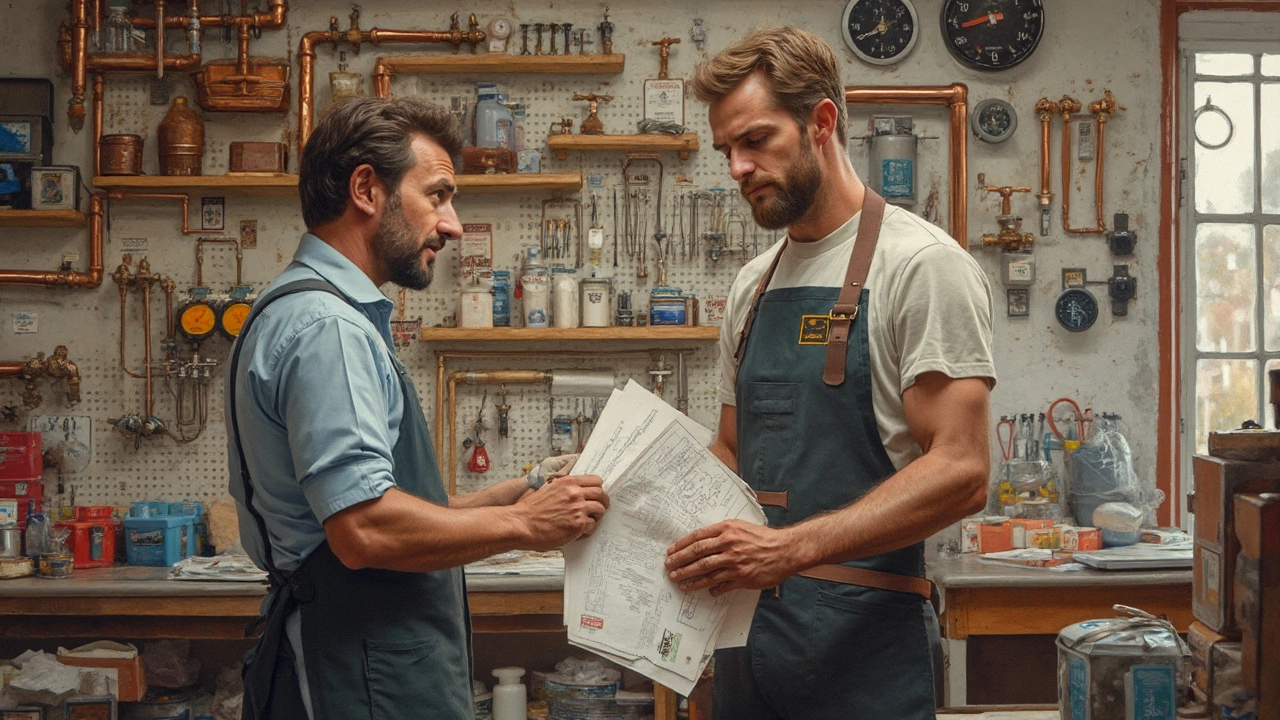
DIY Tips for Troubleshooting
Before ringing up a plumber, there are a few things you can try yourself to figure out why your shower isn't getting hot water while the sink does. Let's break it down into some simple steps that might shed some light on the situation.
1. Check Temperature Settings
First, take a look at the temperature settings on your water heater. It sounds basic, but sometimes the thermostat could have been accidentally nudged to a lower setting. Make sure it's set between 120°F and 140°F, which is the sweet spot for most households.
2. Look for Pipe Blockages
Mineral buildup inside pipes can restrict water flow, affecting only certain fixtures. Try inspecting the visible sections of piping near the water heater or under the bathroom sink for scaling or leaks. A severe blockage usually requires professional help, but identifying it can save diagnostic time later.
3. Test Water Pressure
Water pressure unevenness might cause one fixture to dominate the hot supply. You can check this by turning on multiple hot water taps throughout the house. If the shower pressure drops drastically compared to the sink, swapping out old showerheads for low-flow versions might balance things.
4. Bleed the Shower Valve
If you're comfortable tampering with the inner workings of your shower, you might attempt to "bleed" the shower valve. This entails turning off the water, removing the valve, and allowing any trapped air and debris to escape, which can sometimes restore hot water flow.
5. Inspect for Cross-Connection
A plumbing quirk known as cross-connection could be messing with your water temps. This happens when hot and cold pipes are improperly linked, causing mixing issues. If newly installed appliances started the mystery, make sure they didn't cause a misconnection.
If these tips don't lead to a solution, it might be time to consult with a professional. However, going through these checks can clarify what might be wrong and, more importantly, save your plumber a bit of time assessing the situation.
| Issue | Likelihood |
|---|---|
| Thermostat Missetting | High |
| Pipe Blockage | Moderate |
| Water Pressure Imbalance | Moderate |
| Cross-Connection | Low |
